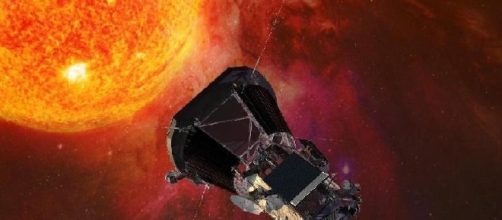NASA is planning to launch a Solar Probe in 2018, which will fly in an elliptical orbit within 4 million miles from the blazing star. It is not possible to go to the surface of the Sun, but a probe can fly by and collect valuable data. The probe will try to answer three questions which have baffled scientists.
The three issues are –
- Why the corona is hotter than the surface.
- How the sun blows particles in all direction at a million miles an hour,
- Why the sun occasionally spews high-energy solar energetic particles which constitute a danger to astronauts and spacecraft.
Carbon Composite Shield will protect the probe
The Solar Probe will orbit the sun 24 times, and gradually it will get closer and closer to the sun, and in the final three orbits, it will fly 3.7 million miles from the surface of the star.
The probe will try to answer the mysteries of our closest star.
However, we are 93 million miles away and therefore to get a better view we will have to get closer. However, the searing heat can be a big challenge, and NASA has designed a 4.5-inch carbon composite shield which will afford protection to the sensitive instruments of the probe. The probe will also have thermal radiators which will radiate heat into space and keep the interiors of the probe cool. The circuits in the probe have been radiation hardened to withstand the radiations from the sun.
Closest human-made object to the sun
The Solar Probe Plus spacecraft is set to launch as early as July 2018, and the primary objective is to gather data which will enable scientists to forecast incidents of extreme solar activity.
Post-Flare Loops Erupt From Suns Surface - NASA is developing a spacecraft that can fly near the Sun. The agenc... https://t.co/8vM7DsBh0h
— Robert Kurtz (@dotnethed) March 1, 2017
Intense solar activity spews huge quantities of highly energized particles from the sun into the outer space and constitutes a significant risk for Astronauts and satellites orbiting the Earth. If successful it will become the closest human-made object to the sun. The Helios Probe holds the previous record.
Last week NASA had announced the discovery of seven Earth-like planets orbiting the nearby star.

